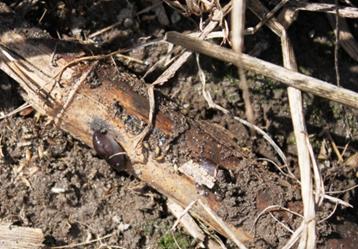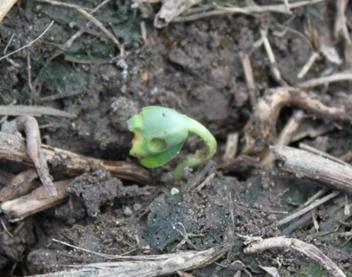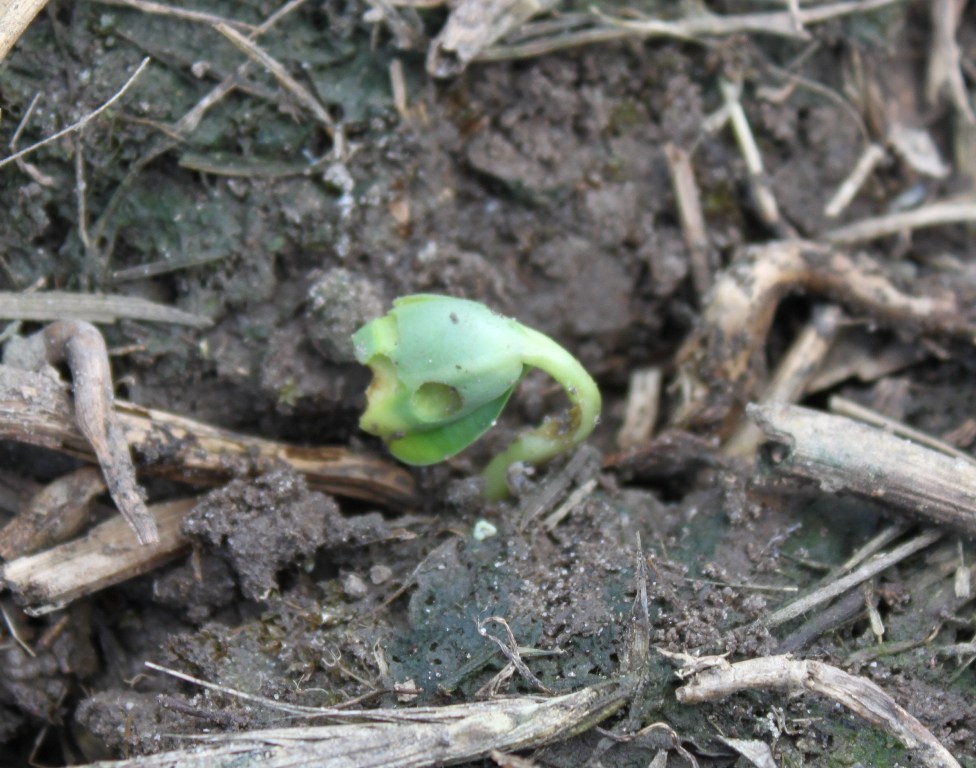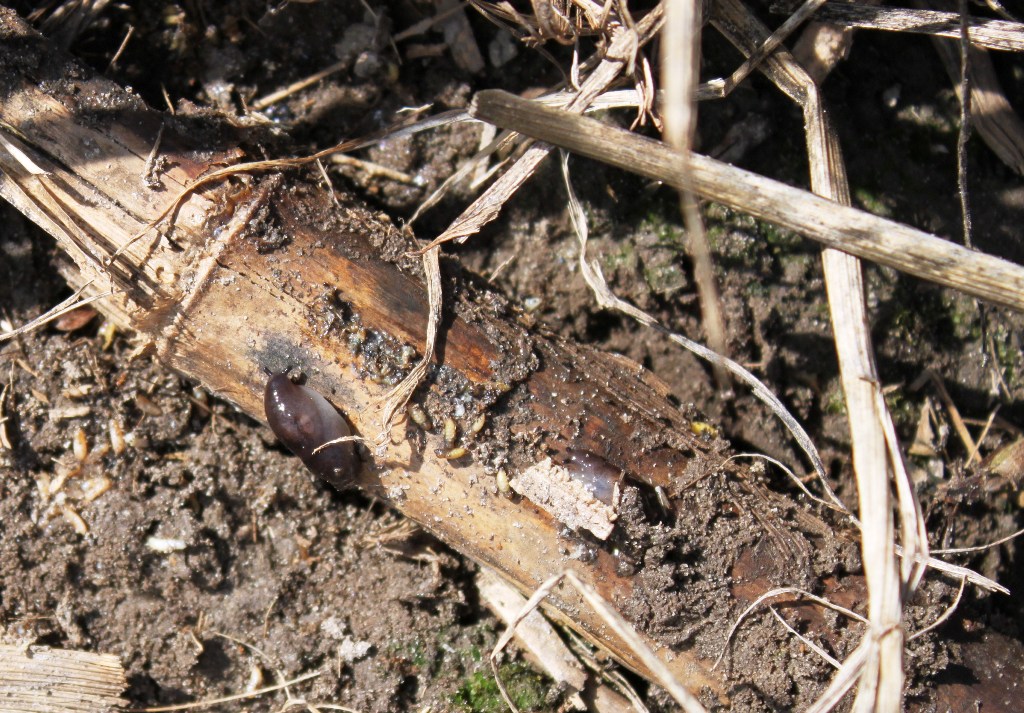Slugs are not a new problem, but they continue to be an unpredictable one. It seems that they show up when and where we least expect them and never show up when and where we do. But considering the cool and wet weather we’re experiencing, we should be on the watch.
The photo below was taken last May, 5 days after planting in a no-till field with a rye cover crop. Stand was about half of what was expected and feeding scars could be seen on the hypocotyl and cotyledons. When digging in the seed furrow, slugs were more often present than not.
Cold, wet weather slows seedling growth; therefore reducing the plant’s ability to outgrow slug damage. Slugs will feed on all crops, taking large chunks out of the stem and sometimes cutting the plants like a cutworm. They feed mostly at night although I’ve seen them feeding during cloudy days (see photo below). In general, they are more of a problem in wet, poorly drained fields or in low-lying portions of fields. Still, we’ve seen them on hilltops.  They are usually a problem in no-till fields with high residue crops such as corn or grain sorghum and/or in fields the slug underneath last year’s corn stalk. If the seed furrow doesn’t fully close, slugs will follow this “highway” and eat seedling after seedling before it emerges from the soil.
They are usually a problem in no-till fields with high residue crops such as corn or grain sorghum and/or in fields the slug underneath last year’s corn stalk. If the seed furrow doesn’t fully close, slugs will follow this “highway” and eat seedling after seedling before it emerges from the soil.
 What can be done about this problem? First, scout the field before you plant, paying close attention to poorly drained or low-lying portions of the field. If you find slugs, you have a couple of options. One is to not plant and wait for warmer and dryer weather. Slug damage usually disappears under warm and dry conditions.
What can be done about this problem? First, scout the field before you plant, paying close attention to poorly drained or low-lying portions of the field. If you find slugs, you have a couple of options. One is to not plant and wait for warmer and dryer weather. Slug damage usually disappears under warm and dry conditions.
Another alternative is to apply the slug bait/molluscicide, Deadline®, which contains the active ingredient metaldehyde. It is sold at Deadline® M-Ps™ Mini-Pellets (colored with a blue dye) and Deadline® Bullets (dye-free). This is the only reliable treatment that we have available. It must be spread evenly at 10 to 40 lbs per acre over the infested area. The product is fairly expensive, so the 10 lb rate is the most common and has worked well in my experience. The product is not commonly stocked by local retailers, so it can be hard to find.
Will slugs be a problem? Maybe. Maybe not. But, with the current weather conditions, I’d suggest scouting those slug-prone fields.




